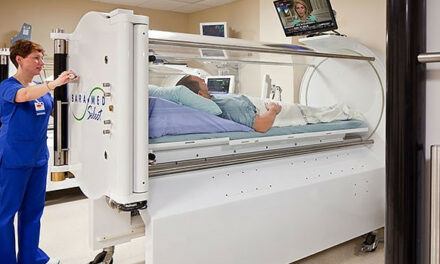The topic of monosodium glutamate has been a controversial one. While the majority believe that monosodium glutamate is good for the body, others believe it is quite harmful. Generally, food additives are recommended, but when their clear effect remains unknown, then it poses a challenge. In this write-up, we will go in-depth to see how beneficial MSG is both for diabetics and nondiabetics. Most importantly, we will be looking at when is MSG bad for diabetics.
Let’s start this Guide on Glutamate and Diabetes by defining monosodium glutamate, also known as MSG.
What is Monosodium Glutamate?
MSG is a food additive with the function of flavor enhancement in food. It is a derivative of glutamate or glutamic acid, which is one of the most abundant amino acids in nature.
Your body can produce glutamic acid because it is a nonessential amino acid that serves so many functions in the body. It can also be found in most foods.
Monosodium glutamate combines salt and glutamic acid and is known as the Sodium Salt. It is a white crystalline powder that looks like salt or sugar.
The glutamic acid in both glutamate and other natural foods are quite similar. Although the glutamic acid in MSG is made by fermenting starch, it is no different from the one found in natural food. The only slight difference is that glutamic acid in MSG might be easily absorbable compared to the ones in natural food. This is because the one in MSG is not bound by big protein molecules in the body.
One unique quality of monosodium glutamate is that it enhances the savory, meaty umami flavor of food. Umami is the fifth basic taste after salty, sour, bitter, and sweet taste found in the taste bud.
This additive is more popular in Chinese and Asian countries.
History of Monosodium Glutamate
The popular monosodium glutamate was founded in 1908 by a chemist called Ikeda kikunae. He got an ingredient with so much flavor which is now known as Monosodium glutamate from a sea kelp and added it into a Japanese broth called konbu dashi. The taste was very good, and he called it umami which stands for tasty in Japan.
His major source of inspiration has been said to have originated from an article written by a Japanese doctor. The article talks about how easy and interesting it was to eat good food that tasted great.
As at that time he was in Germany working, so he decided to present his discovery about Monosodium glutamate. From then, MSG became very popular in Japan, United States, England, and France. In order to distribute it further, he gave the product to a manufacturer of iodine who then created more of it and marketed it renaming it as Ajinomoto, meaning “essence of taste”.
The product thrived so much because so many people were interested in it, but this was only short-lived. So many people started raising suspicion about the safety of the product, and it directly led to the shortage of customers and finance for the first few years.
Ajinomoto company didn’t relent as they constantly presented their products to so many food companies. This was met with so much rejection, so then they turned to housewives.
Their approach was to the Bourgeois women who were well-known for their love of good tasty food. They were always trying to impress their families with tasty meals which made them accept Monosodium glutamate as an additive.
As Japan continued to develop, MSG was no longer well sought for, and it became less common. This could be attributed to the fact that most housewives stopped cooking and shifted the function to house girls. Again, monosodium glutamate became expensive, leaving only a few people who wanted to maintain their good taste in food to buy it.
Shortly after that, there was another breakthrough for monosodium glutamate as experts in western cuisine started supporting the product. MSG started raising approval again because of the good taste, and so many other companies became interested. This helped the Ajinomoto company to start rising again.
MSG is still widely used today, but not as massively as before because other good food additives that are considered more safe are springing up.
MSG has been identified to serve as the fifth taste; hence it is called Umami.
Uses of Monosodium Glutamate Today
The primary function of MSG is in food application. Because of the umami taste it has, it goes a long in intensifying the meaty flavors of food that it is being added to.
Other basic functions of MSG are as follows
- It is being used in so many canned food products together with spice blends.
- One adds it to tobacco so they can improve its taste.
- It is also being used in the treatment of hepatic coma.
- Some ramen noodle products use it as an essential component.
Is Monosodium Glutamate Gluten, or Gluten-free?
When you hear monosodium, the first thing that comes to your mind is salt, the same way that glutamate sounds like gluten. Nevertheless, glutamate sounding like gluten doesn’t mean that it contains gluten. Monosodium glutamate is found to be gluten-free.
It was highly believed that it contained gluten because it was isolated from wheat gluten which is high in glutamate. But of recent, MSG is now produced by the fermentation of sugar beets or molasses. It can also be created in the lab using elements like carbon, hydrogen, nitrogen, sodium, and oxygen.
So, in general, MSG is gluten-free.
Tip: Chinen Salt also known as Berberine Salt is a better salt option for diabetics.
How Monosodium Glutamate Affects Diabetes?
In a bid to find out if monosodium glutamate has a negative or positive effect on diabetics, some researches were carried out.
In some studies carried out in rodents, it was found that MSG increased the risk of insulin resistance, diabetes, and obesity in those rodents.
Based on the large population-based study in China, so-called the Jiangsu Nutrition Study, researchers checked the relationship between MSG intake and the risk of hyperglycemia (high blood glucose) after 5 years.
After the test, which included so many households and people from both sexes, the study authors found out that the mean intake of MSG for the whole population was 3.8g/day. After adjusting some research parameters the highest quartile of MSG was linked with a lower risk of incident hyperglycemia and reduced obesity.
Based on all the results, the authors concluded that high MSG intake is associated with a decreased risk of hyperglycemia in Chinese adults.
In another food study conducted among diabetic patients in a hospital, using different foods. A few of them were served additional vegetable and starch dishes with 0.6% of monosodium glutamate. The patients in the experimental group took more starch food than others, not in the experimental group.
After the study, it was concluded that monosodium glutamate affects mealtime selection in diabetic patients. This is a replication of the observation made on elderly persons. The study showed that you can manipulate the palatability of various foods within a meal using MSG. It was also shown to be a great way to affect food selection in the meal, without inducing hyperplasia.
There is also another study
suggesting that monosodium glutamate has the potential to induce elevations in blood glucose levels.
Another study also suggests that abnormal glutamate homeostasis might contribute to diabetes pathogenesis, and excessive intake of MSG can cause insulin resistance.
All these research studies showing the effect of monosodium glutamate can further be explained using the Chinese Restaurant Effect Theory.
What is the Chinese Restaurant Effect Theory?
This is a theory that explains why your blood glucose level may rise after eating a meal. Although, it is only a theory, there are some scientific proofs to it.
Chinese restaurant theory was propounded by Dr. Richard K Bernstein.
Dr. Bernstein is a low-carb pioneer who has spent most of his professional life-fighting theories about diabetes which are already out-of-date. In Dr. Bernstein’s seminal book about diabetes solutions, which he released in 1997, he narrated his experience with one of the diabetic patients.
The patient stated that she always experienced a high increase in blood glucose level anytime she swims, from 5.0 to 16.7. On further questioning, Dr. Bernstein found out that the patient always ate head lettuce before she swims.
A head of lettuce contains 10g of carbohydrate, so Bernstein wrote that it is very likely for the carbohydrate to increase the blood glucose of type 1 diabetic patients.
So, the question became why her blood glucose rose from 5.0 to 16.7mmol/L.
This was explained by the Chinese Restaurant Effect.
What is the Mechanism of the Chinese Restaurant Effect?
The upper part of the small intestines contains cells that release hormones into the bloodstream when there are stretched. This stretching can be caused by a large meal. The hormones cause the pancreas to produce insulin to prevent the blood sugar rise, which rises after digestion of a meal.
The major component of Chinese meals is usually a protein or slow-acting low carb foods like bean sprouts, mushrooms, bamboo shoots, and water chestnuts. When these are eaten in large quantities, Dr. Bernstein points out that it can increase the stretching of the intestine cells, which will secrete large amounts of these intestinal cell hormones.
For people with diabetes who don’t produce insulin enough, or who have non-functional insulin, these large meals can affect the glucagon level.
Glucagon is another hormone that counters the glucose-lowering effect of insulin. In other words, it increases the blood glucose level. Dr. Bernstein then opined that when diabetics eat a large amount of this Chinese food, it could cause a disproportionate glucagon response, especially in people with diabetes.
Is MSG Bad for Diabetics? When is MSG Bad for Diabetics?
From these studies conducted, MSG can be said to be bad for diabetics when taken in excess. Also, most people complain of adverse high effects after taking food containing MSG. MSG can be said to be bad for diabetics, when diabetics take MSG and have the following side effects;
- headache,
- flushing,
- sweating,
- facial pressure or tightness,
- numbness, or
- burning in the face,
- rapid heartbeats,
- chest pain,
- fatigue, and
- nausea.
So, when diabetics take MSG and have any side effects, it is advised that they stop taking it. However, it is worthy of note that some people’s reaction to this MSG effect is short-lived. However, they must take safety precautions.
Is MSG Good for Diabetics? When is MSG Good for Diabetics?
Just like people without diabetes enjoy the umami meaty flavor that comes from MSG, diabetics can also enjoy that whilst taking MSG in moderate proportion.
MSG can also be good for diabetics in a situation where it is used as an enhancer or as an appetite booster. You can use MSG to boost food selection in diabetics without indicating hyperplasia.
So, MSG can be good for diabetics when taken in a small amount, but in a case where you are sensitive to it, or you notice any side effects after consumption, then you can stop taking it.
What are the Negative Effects of MSG on Diabetics?
After some studies, it has been found that some chemical changes occur in the body as a result of ingesting MSG.
- Lowering of adiponectin
Adiponectin functions as a protein that helps in regulating the blood sugar level and the amount of energy used by the body. When MSG lowers adiponectin, it causes an increase in blood sugar levels and a significant decrease in metabolism. This can, in turn, trigger massive weight gain.
For diabetics, this can be very dangerous because diabetics need to have a moderate blood sugar level and moderate weight.
- The presence of Leptin is affected
Ingesting MSG can cause the brain not to recognize the presence of leptin. Leptin functions as a chemical messenger which is usually released by fat cells to signal the brain to stop eating. It does this by traveling to the brain. When MSG affects these chemicals, the receptors in the brain can no longer receive the signals despite its constant production by fat cells.
This means that there will always be an increased appetite in the people involved.
- Liver damage
It has been speculated that when too much MSG gets into the liver, it can lead to various conditions like inflammation of blood vessels, destruction of red blood cells, and death of liver cells. It has also been noted that most foods containing MSG has very high trans fat. This combination of MSG and trans-fat can lead to nonalcoholic fatty liver disease.
This fatty liver disease can, in turn, lead to insulin resistance, resulting in high blood sugar and blood insulin levels.
This insulin resistance is very harmful to those with type 2 diabetes.
Conclusion
Glutamate has a good side as well as a bad side. When you add MSG in a moderate proportion, it won’t have any side effects. However, if you react to MSG, ensure that you check the food content whenever you go to a restaurant to avoid complicating issues for yourself.
Most of the things said about MSG are still speculations, so take in moderate proportion till a definite conclusion is reached about its safety.







